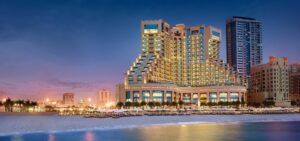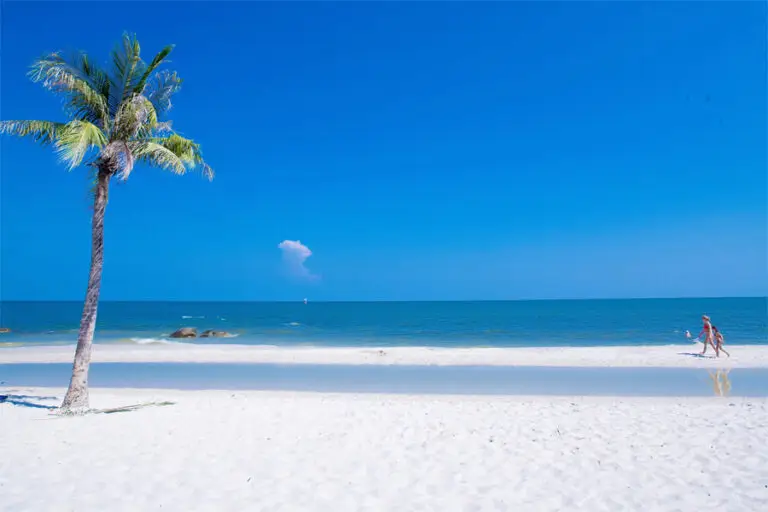Hanoi’s Historical Journey: Discovering the Capital’s 25 Top Attractions
Hanoi, Vietnam’s capital, exudes a tranquil ambiance, contrasting with the lively vibe of Ho Chi Minh City. Its rich cultural heritage, shaped over time, epitomizes the essence of Vietnam. This article highlights 25 prime attractions in Hanoi for travelers. After gaining independence from China in 1010, Hanoi, then known as “Thang Long,” became Vietnam’s capital during the Ly Dynasty. As the seat of power through the Ly, Tran, and Le Dynasties, Hanoi flourished with magnificent palaces and temples. However, in 1831, the capital shifted to Hue, leaving Hanoi deserted. Subsequently, the city by the Red River adopted the name “Hanoi.”

-
Hoan Kiem Lake, also known as Restored Sword Lake, is a tranquil beauty nestled in the heart of the city. Only by visiting this place can you truly grasp why it’s hailed as one of Hanoi’s premier attractions. Situated in the heart of the Hanoi Old Quarter, Hoan Kiem Lake harbors a captivating legend of the city. It narrates the tale of King Le Loi, who embarked on a leisurely sampan trip on the lake following a victorious battle against Chinese invaders. During his excursion, a Golden Tortoise suddenly emerged to reclaim a sacred sword bestowed upon the King by the Gods to safeguard the nation against its foes. The tortoise then vanished into the lake, giving rise to its present-day name. In the middle of the lake, you’ll find Thap Rua, also known as The Tortoise Tower, gracing an islet and standing as one of Hanoi’s most cherished attractions.
-
Ngoc Son Temple, often referred to as the “Jade Mountain Temple,” is located not far from the Tortoise Tower and can be reached by crossing the red-painted wooden bridge known as The Huc Bridge, or the Sunrise Bridge. Constructed in the 19th century, this temple is dedicated to General Tran Hung Dao, a heroic figure who valiantly defended against the Mongol invasion in the 13th century. Ngoc Son Temple holds its place as one of the top destinations to explore in Hanoi.
-
The Huc Bridge, connecting Ngoc Son Temple on Jade Island to the shores of Hoan Kiem Lake, is a remarkable attraction with stunning sunrise vistas. This vibrant red bridge also goes by the name “Sunlight Morning Bridge,” as it becomes especially enchanting in the morning light when the sun rises. Conversely, in the evening, it dazzles with lights and offers a captivating view of the lake. There are cozy seating areas beneath the nearby ancient trees where visitors can enjoy a refreshing breeze. With its scenic charm, The Huc Bridge consistently ranks among Hanoi’s top places of interest.
-
Hanoi Old Quarter is an expansive area encompassing 36 ancient streets, renowned for their long history of trade. Today, while some streets have undergone modernization, they continue to preserve their traditional products, often lending their names to the goods they sell. For example, Hang Ma Street specializes in votives and holiday decorations, with its name translating to “votive street.” What makes these streets particularly appealing to visit in Hanoi is the food tour experience, with numerous small, renowned food shops offering delectable culinary delights.
-
Dong Xuan Market, situated to the north of the Old Quarter, is a dynamic hub in Hanoi teeming with shops showcasing an array of goods. From basketry and carpets to local specialties, you’ll find a diverse range of products here. Surprisingly, you can also find French wine and Russian vodka at affordable prices, along with colorful flower stalls that infuse life into the market. Additionally, Dong Xuan Market stands out as a must-visit destination in Hanoi for its unique and enticing culinary offerings.
-
Hanoi Opera House, nestled in the heart of the Old Quarter, captivates visitors with its European-inspired architectural charm. Built by the French in 1901 during their colonial rule, the opera house draws inspiration from iconic European structures like the Paris Opera and Tuileries Castle. In its heyday, it was an exclusive venue for the elite. The interior is a testament to opulence, adorned with Italian white tiles and a regal red carpet reminiscent of the British Royal Palace. The grandstand design takes inspiration from the Colosseum, further adding to its allure. Hanoi Opera House stands as Southeast Asia’s most beautiful opera house and is a top choice for those seeking interesting places to explore in Hanoi.
-
Hanoi Water Puppet Show is a mesmerizing visual art form that’s a must-see in Hanoi. This unique art can be enjoyed at the Thang Long Water Puppet Theater, one of Hanoi’s premier attractions. Established in 1969, the theater has played a pivotal role in introducing this traditional art to the world. The performances unfold on a stage set on a lake, with artists manipulating puppets immersed in the water behind the scenes. The enchanting atmosphere is enhanced by music and the applause that accompanies the emergence of various characters, such as dragons, from the water. English subtitles are often available, enabling foreign visitors to grasp the narrative of the stories.
-
St. Joseph’s Cathedral Hanoi, a French-built structure located in the Hanoi Old Quarter, exudes an Indochina style reminiscent of Notre Dame Cathedral in Saigon. Upon entering the cathedral through its main gate, visitors are greeted by a space bathed in radiant light. The atmosphere takes on an enchanting quality as light filters through stained-glass windows, creating a magical ambiance. The cathedral’s architecture draws from European Gothic influences and is considered a pinnacle of 12th-century construction techniques. St. Joseph’s Cathedral Hanoi is a sight to behold and ranks among the top places to visit in Hanoi.
-
Ho Chi Minh Mausoleum, constructed in 1973 despite Ho Chi Minh’s wish for cremation, stands on the site where he delivered Vietnam’s Declaration of Independence on September 2, 1945. It is also the place where, exactly 24 years later, he passed away. Ho Chi Minh’s preserved body rests in a glass coffin within the mausoleum, serving as a solemn and significant site for visitors to Hanoi. Situated behind the mausoleum is a stilted wooden house, which was Ho Chi Minh’s residence from 1958 to 1969. Built in the style of Vietnamese ethnic minorities, this house has been preserved since the day when Ho Chi Minh passed away. These historical sites remain popular places of interest for those exploring Hanoi.
-
One Pillar Pagoda, built in 1049 by Emperor Ly Thai Tong, is a symbol of gratitude to the Goddess of Mercy for granting him a son. The pagoda, part of the Ho Chi Minh Mausoleum complex, is constructed on a single stone pillar designed to resemble a lotus blossom, symbolizing purity. When visiting this site, it’s important to dress modestly and formally due to its solemn nature.
-
The Temple of Literature, constructed in 1070, showcases traditional Vietnamese architecture. Initially dedicated to Confucius, it served as Vietnam’s first university, offering education outside the Buddhist sphere. The temple’s grounds feature various Vietnamese structures, including the Khue Van Pavilion, which once served as a meeting place for scholars. The Temple of Literature stands as a testament to Vietnam’s studious tradition and ranks among the top attractions in Hanoi.
-
West Lake, the largest lake in Hanoi, offers serene vistas and an array of culinary delights. Visitors can partake in activities such as jogging and biking around the lake, sampling Shrimp Cake, Clear Cake, and Ice Cream at small restaurants, and even enjoying water games at the Water Park. Artfully decorated cafes and shops dot the nearby area, making it an ideal spot to explore the culture and history of the location. Tran Quoc Pagoda, situated on the lake’s shores, adds to the beauty and allure of West Lake.
-
Tran Quoc Pagoda, built 1500 years ago and perched on West Lake, resembles a lotus reflected on the water. The pagoda’s serene ambiance blends seamlessly with its lush garden setting, which boasts ancient trees and numerous surrounding towers. Over the years, Tran Quoc Pagoda has welcomed prominent global figures, including Indian President Prasat and Russian President Dmitri Medvedev, making it a popular attraction for foreign visitors.
-
The Vietnam Museum of Ethnology, established in 1995, stands out as a top destination in Hanoi, offering a vast collection of artifacts and a comprehensive representation of Vietnam’s ethnological diversity. The museum houses 15,000 items and over 12,000 documents and images indoors. Furthermore, its outdoor area features various architectural models representing the diverse ethnological patterns of Vietnam. The museum plays a crucial role in educating both locals and foreigners about Vietnamese culture and spirit, making it a valuable cultural and historical center in Hanoi.
-
The Imperial Citadel of Thang Long, initially built in the 7th century and expanded over time, occupies a vast area of 18,395 hectares. This historical site encompasses archaeological findings such as 18 Hoang Dieu, as well as well-preserved structures like Doan Mon, Hanoi Flag Tower, Kinh Thien Palace, D67 House, Bac Mon, Hau Lau, City Wall, and eight other gates constructed during the Nguyen Dynasty. The Imperial Citadel of Thang Long stands as one of Vietnam’s most significant heritage sites and holds invaluable historical value, making it an essential stop for history enthusiasts.
-
Hanoi Train Street has gained popularity among tourists for its unique experience of watching trains pass by at close range. Cafes with artistic decor line the railway, and travelers often visit to enjoy Vietnamese coffee, take photos, and wait for the train. While it offers a distinctive and picturesque atmosphere, visitors are urged to prioritize their safety while enjoying this unique sight.
-
Long Bien Bridge, the first steel bridge on the Red River, connects two districts in Hanoi. Built by the French from 1898 to 1902, this 2,290-meter-long bridge features a one-of-a-kind design, with a railway track in the middle and two roads flanking it. It was once the second-longest bridge globally, following the Brooklyn Bridge over the East River in the United States. Often referred to as the “horizontal Eiffel Tower in Hanoi,” Long Bien Bridge is admired for its architectural splendor and scenic surroundings, making it a captivating destination to explore.
-
Hoa Lo Prison, known as the “Maison Centrale” (Central Prison) by the French during their colonial rule, was one of the largest prisons in French Indochina. Today, it serves as a haunting reminder of the harsh conditions and brutal treatment endured by Vietnamese inmates during the French colonial period. Visitors can view guillotines used for executions and explore dark, cramped cells where prisoners suffered. Despite the grim history, the resilience of the Vietnamese spirit is evident, as inmates transformed the prison into a place of education and even devised escape plans. Hoa Lo Prison stands as a testament to this spirit and ranks among Hanoi’s intriguing historical sites.
-
Quan Thanh Temple, one of four temples constructed to safeguard Hanoi’s peace, was founded in 1010 when King Ly Thai To designated the city as the nation’s capital. While the temple you see today underwent its final reconstruction in 1893, it adheres to Chinese architectural style. The temple’s gate is a prominent feature, adorned with four main pillars and four phoenix statues. Notably, the temple also features a statue of the God Rahu, showcasing Vietnam’s cultural adaptability.
-
Bach Ma Temple, originally built in the 9th century and renamed Bach Ma (White Horse) by King Ly Thai To, symbolizes the city’s completion as a citadel. Legend has it that the citadel’s construction was completed when a magical white horse circled the temple before disappearing. The temple retains its ancient charm, with moss-covered stone walls and decorative elements reminiscent of the Guangdong Assembly Hall in Hoi An. Various small structures are arranged vertically within a closed space, and the temple also houses Te Vuong Phi and Be Nui shrines.
-
The Vietnam Military History Museum, situated at the heart of Hanoi, stands as one of the city’s most prominent attractions. It is one of seven national museums in Vietnam boasting an extensive collection of items and drawing thousands of domestic and foreign visitors each year. The museum houses approximately two thousand artifacts that trace Vietnam’s history of defense against formidable adversaries, showcasing the resilience, spirit, and intellect of the Vietnamese people.
-
The Fine Arts Museum Hanoi, centrally located in the city, is celebrated for its expansive collection of artwork and its captivating architectural design. Initially constructed during the French colonial period, the museum has since been reconstructed to incorporate Vietnamese architectural elements. The museum offers a spacious presentation area spanning about three thousand square meters, as well as areas for children’s creativity and dining options.
-
Quang Ba Flower Market, located near West Lake in Hanoi, is renowned for its vibrant display of flowers, particularly at night. This market is the foremost destination for wholesale flower trading in North Vietnam, boasting a wide array of domestic and imported flower varieties. The market comes alive during the nighttime hours, typically from midnight to 2 AM, attracting visitors who come to admire the colorful blooms and experience the bustling atmosphere. After exploring the market, visitors can indulge in special local foods available at affordable prices, all while soaking in the unique ambiance of Hanoi at night.
-
Perfume Pagoda, situated in the Yen Stream Valley, encompasses a series of temples and pagodas scattered throughout the valley. Visitors have the option to explore selected temples and pagodas based on their preferences, with the convenience of a cable car offering a panoramic view of the area. The best time to visit is during September, October, and November when water lilies bloom, and the Yen River’s adjacent fields turn lush green. To avoid crowds, it’s advisable not to visit during the first three months of the lunar new year when the site hosts bustling festivals.
- Duong Lam Ancient Village – A tranquil haven removed from the bustling outside world Duong Lam Ancient Village may not be renowned for its traditional vocations, but it distinguishes itself to visitors through a collection of over a hundred century-old houses. These houses, constructed a century ago, stand out with their distinctive bare red brick architecture. As you pass through the village’s aged gateway, you’ll immediately sense the serenity that envelops this historic place. Feel free to explore the village at your own pace, and take the opportunity to step into any of the ancient homes to delve into the everyday lives of its inhabitants. The local residents are more than happy to welcome you without any commercial agenda. Along the village’s lanes, you’ll encounter only a few modest stalls offering local delicacies such as dried sweet soup and peanut candy.









